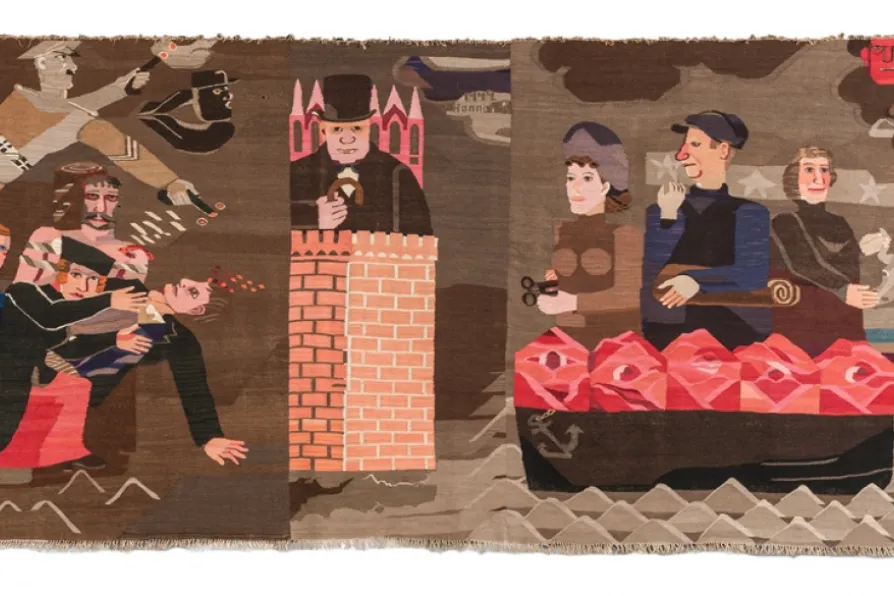The bard pays homage to his two muses: his wife and his football club
A timeless weaver of defiance, retribution and wit
The celebration of universal human values in the tapestries of Hannah Ryggen still speak to us across the decades, says CHRISTINE LINDEY


Hannah Ryggen: Woven Histories
Modern Art Oxford
BECAUSE she dared to challenge the entrenched categorisation of “high” and “low” art, the artist Hannah Ryggen (1894-1970) is little known outside Scandinavia.
By marrying the folk craft of weaving with the sociopolitical content of history painting — the pinnacle of the high art hierarchy — she so confounded critical assumptions that she was easily ignored.
Born in the Swedish city of Malmo to a cook and ex-sailor/labourer, Ryggen never lost her working-class consciousness. Aged 19, she became a school teacher and it was then that a friend, the school cleaner, introduced her to the pleasures of the folk art of weaving. At the same time, Ryggen studied art at night school where she learned academic principles and techniques.
Similar stories

ANDY HEDGECOCK relishes two exhibitions that blur the boundaries between art and community engagement

JAN WOOLF wallows in the historical mulch of post WW2 West Germany, and the resistant, challenging sense made of it by Anselm Kiefer

CAROLINE FOWLER explains how the slave trade helped establish the ‘golden age’ of Dutch painting and where to find its hidden traces

The Morning Star sorts the good eggs from the rotten scoundrels of the year










